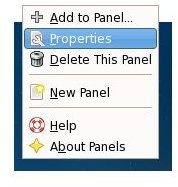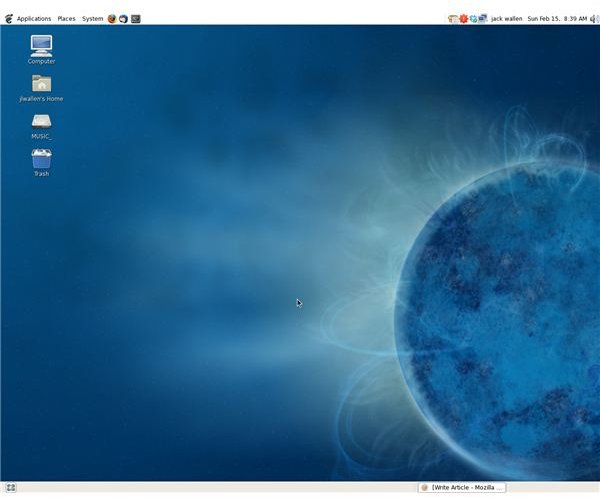What is GNOME? Understanding and Using the GNOME panel
What is a panel?
That is a good question, and one that should not be overlooked. A panel is a strip of screen real estate (either at the top, the bottom, or either side of the desktop) that houses many features and is the most interactive portion of the desktop. In many desktop environments the panel is highly configurable so you can make it look and feel exactly how you want. In the case of the GNOME panel, you can do just that - configure to your hearts’ content.
Why two panels?
As you can see, in the image below, the GNOME desktop defaults to two panels. Why? There are a couple of reasons. First, it keeps the main panel (the one on top) from being too cluttered. Second, it roughly resembles the Apple OS X desktop, which many consider to be one of the most user-friendly desktops. Hence - two panels. In the case of GNOME, the top panel is the main panel where applications are launched and notifications are made. The bottom panel is what holds the winlist (where windows are minimized) and the “Show Desktop” button.
Of course you can re-arrange any of the elements on the panels, move elements from one panel to another, add a panel, or delete a panel. You could have a panel on every side of the screen if you like.
Default Desktop
Panel “pieces”
The default main GNOME panel houses the following elements:
Menus - There are three menus: Applications (where applications are launched), Places (where you can instantly access local and remote directories), and System (where you can configure your machine).
Launchers - Small icons that launch applications.
Notification Area - A portion of the panel that holds tiny applets that give you information about the system and offer some control over certain elements of the desktop.
The secondary GNOME panel holds the following elements:
Winlist - This is where all of your application windows are minimized to. To maximize the window you click on that windows’ Winlist entry.
Show Desktop Button - Click on this button once and everything open on your desktop will be hidden. Click on the same button a second time and everything will reappear.
Configuring the Panel
The configuration of the GNOME panel is simple. If you right click on any empty section of the panel a menu will appear. From this menu you will see there are a few options to select:
Add a Panel - This allows you to add an element to the panel. When you click on this a new window will open. This new window allows you to add a pre-configured element (such as the various applets) or create a custom launcher for your panel.
Properties - This will reveal the Properties window of that panel. The Properties window allows you to configure the look and the location of that particular panel.
Delete This Panel - This allows you to delete the panel in question.
New Panel - This allows you to add an empty Panel to your desktop. The empty panel will appear on an empty edge of your screen. You can add anything to this new panel.
Help - This will open the GNOME help application.
About Panels - This will open the About information window, telling you which version of the GNOME panels application is installed on your system.
Panel properties

Moving elements around
As I said earlier, you can move panel elements around. To do this will depend upon the type of element.
Element with handle: Take a look at the image below titled “Element Handle”. To the right of the small red dot (this dot is not part of the panel - it was added to for ease of locating the handle), you will see two vertical dotted lines. That is the handle for this element (the element being the Notification area). If you left click this handle you can drag that element to any place on the panel or even to another panel.
Launcher: To move a launcher you right click the launcher and select the Move entry. You can now move this element around.
Menu: Right click the menu and de-select Lock. Once the menu is unlocked you can move it around. Just make sure you lock the menu back after you have placed it.
Element Handle

Final Thougths
Now you can see…the GNOME panel is very easy to use. I hope this article has brought you some understanding as you begin your GNOME journey.
